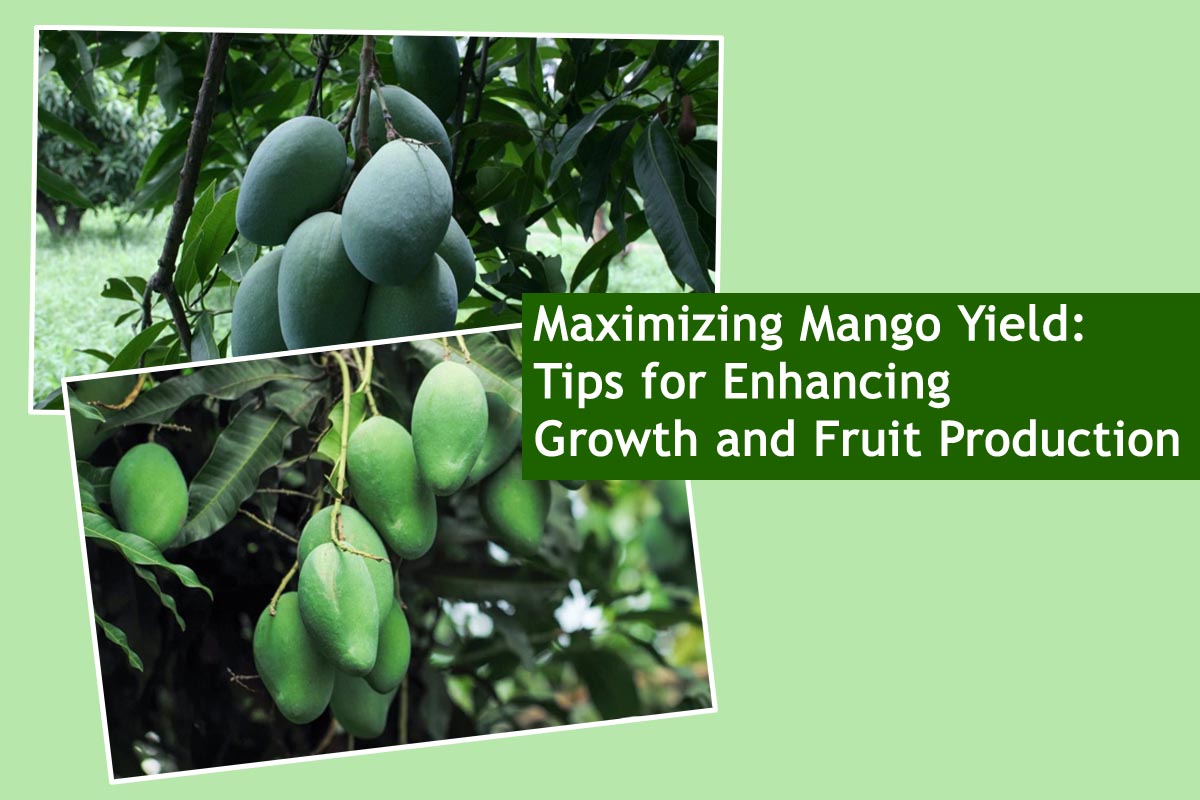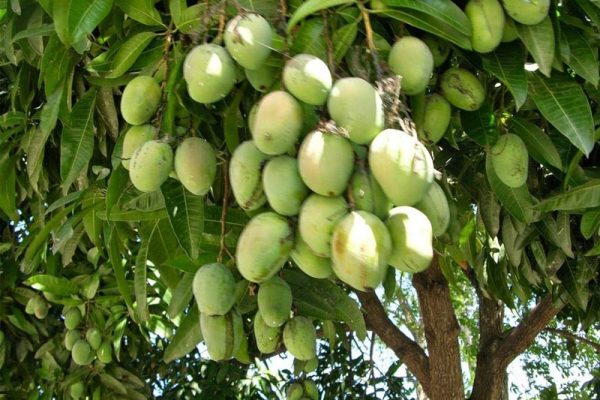
Maximizing Mango Yield: Tips for Enhancing Growth and Fruit Production
As the mango season approaches, many gardeners and enthusiasts eagerly anticipate the lush bounty of this beloved fruit. However, ensuring a bountiful harvest requires careful attention to the care and nourishment of mango trees. In this article, we’ll explore various techniques to promote robust growth and abundant fruit production in mango trees.
Understanding Mango Growth:
Before delving into cultivation techniques, it’s essential to understand the growth cycle of mango trees. Mango trees typically bear fruit within three to five years of planting, with optimal fruit production occurring between six and fifteen years. Understanding the growth stages—from flowering to fruit development—is crucial for implementing effective cultivation practices.

Variety Selection:
Choosing the right mango variety for your climate and soil conditions is essential for maximizing yield. Consult local agricultural extension services or nurseries to select varieties known for their productivity and disease resistance. Consider factors such as flowering and fruiting habits, as well as fruit quality and flavor.
Also Read This : Five Simple Strategies for Prolonging the Blooms of Your Peace Lily Houseplants
Planting and Spacing:
Proper planting and spacing ensure that mango trees have ample room to grow and develop a robust root system. Plant trees in well-drained locations with plenty of sunlight. Space trees at least 20 to 25 feet apart to allow for adequate airflow and sunlight penetration. Avoid planting mango trees in low-lying areas prone to waterlogging.
Water Management:
Consistent watering is crucial, especially during the flowering and fruiting stages. Mango trees prefer moist but not waterlogged soil. Water deeply and infrequently, allowing the soil to dry out slightly between waterings. Mulching around the base of the tree helps retain soil moisture and suppress weed growth.
Also Read This : Maximizing Greenery: Crafting a Stunning Terrace Garden in Limited Space
Fertilization:
Fertilizing mango trees at the right time and with the proper nutrients is essential for promoting healthy growth and fruit production. Apply a balanced fertilizer formulated for fruit trees in early spring before new growth begins. Supplement with micronutrients such as zinc, manganese, and boron to address specific deficiencies identified through soil testing.
Pruning and Training:
Pruning plays a crucial role in shaping the growth of mango trees and maximizing fruit yield. Remove dead, diseased, or crossing branches to improve airflow and sunlight penetration. Prune young trees to encourage a strong scaffold structure and remove competing branches. Training trees to a central leader or open-center shape promotes balanced growth and facilitates fruiting.
Also Read This : Blooming Success: Easy Steps for Abundant Rose Buds and Flowers
Tips for Enhancing Growth and Fruit Production
If your mango tree is struggling to thrive or produce fruits, one of the first steps is to assess the soil quality. Ensure proper soil moisture and nutrient levels without disturbing the roots.
During the rainy season, pruning can encourage denser foliage and stimulate new branches, ultimately enhancing fruit production. However, it’s essential to avoid cutting the main stem of the tree.
Also Read This : Unlocking the Treasure of Aloe Vera: Grow Your Own for Home Remedies
When it comes to fertilizing mango trees, two types of fertilizers can be used effectively. One option is a blue tincture, also known as “tootiya,” which can be purchased for a nominal cost. Soak it in water overnight and then apply it to the soil after tilling.
The other fertilizer is a daily bloom fertilizer, available for purchase online. Mix 300 grams of this fertilizer into the soil for optimal results. This fertilization process can be repeated every 15 to 20 days to promote consistent fruiting. With regular fertilization, you may start noticing flower buds within two months.
As the tree begins to flower, maintaining soil moisture is crucial to prevent premature flower drop. Adequate moisture levels ensure that the flowers are retained, leading to a higher fruit set.
If pests become a concern, chemical treatments can be used to control infestations and protect fruit yield. However, for those preferring organic methods, refrain from using chemicals and explore alternative pest management strategies.
Also Read This : Exploring Home Gardening: Choosing Your Perfect Garden
For those interested in grafting, the video accompanying this article provides insights into selecting the best mango varieties for container gardening or grafting onto existing trees.
By implementing these techniques and staying vigilant in caring for your mango tree, you can maximize fruit yield and enjoy a plentiful harvest. Whether you’re a seasoned gardener or a novice enthusiast, nurturing a mango tree can be a rewarding experience, yielding sweet rewards for years to come.




